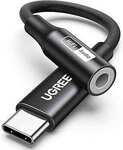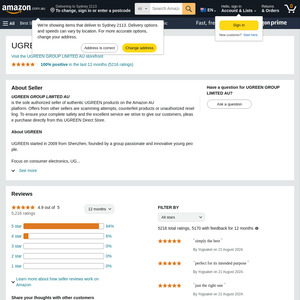Lowest price according to CamelCamelCamel.
Higher performance Dac then the Apple Dongle A2049 everyone raves about.
If you qualify for the Cashrewards $5 bonus cashback on $20 spend, even cheaper ~$15.00.
More Words:
DAC Chip for Hi-Fi Sound Quality: Built-in with digital audio converter (DAC) high-resolution chipset, UGREEN USB C to headphone adapter offers a sampling rate of up to 384KHz/32bit to enhance the original sound quality.
Hi-Res Design: High fidelity design ensures stable audio signal and no loss transmission. The DAC chip and PCM/DSD decoding technology will provide clear high, soft intermediate, and pure low frequency for you to enjoy an incomparable musical Banquet all the time.
More Durable Design: With the relief strain design, this USB Type C to 3.5mm headphone jack adapter can withstand more than 15000 bending tests. The 3.5mm audio cable has alloy shell and nylon-braided materials, so you don’t have to worry about it being scratched or wires fracture
Wider Compatibility: The USB C Aux Dongle fits most USB-C phones tablets, and laptops, compatible with iPhone 16 Pro Max/16 Pro/16 Plus/16, Galaxy S23/S23 Ultra/S23+/S22/S22 Ultra/S22+/S21/S21 Ultra/S21+/Note20/Note20 Ultra/S20 Ultra/S20/Note10+/S10/S10e/S10+/S9/S8, Google Pixel 7/7 Pro/6/6 Pro/5a/5/4XL/4, iPad mini 6/iPad Pro 2022/2021, iPad Air 4/5, iMac, Macbook Pro 2023, Macbook Air 2022, 10 Pro/9 Pro/8, most of the Type C phones, PS5




 CamelCamelCamel
CamelCamelCamel

And the moon is made of green cheese.